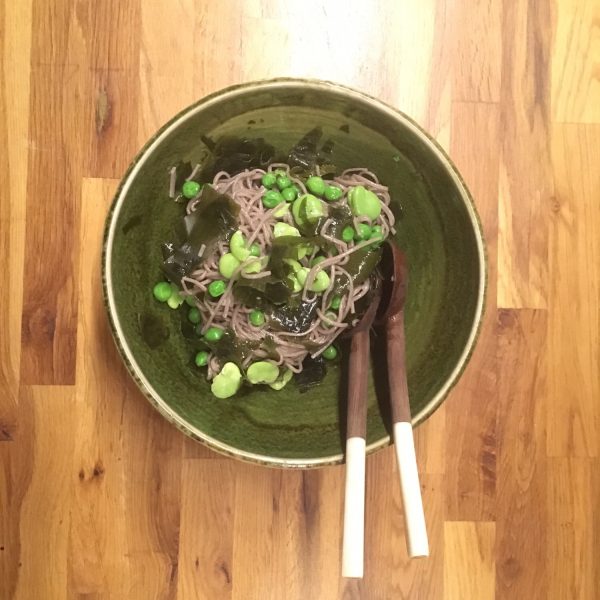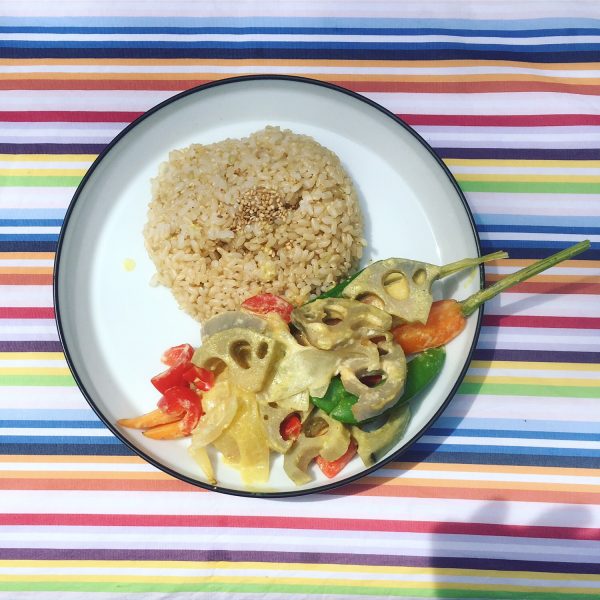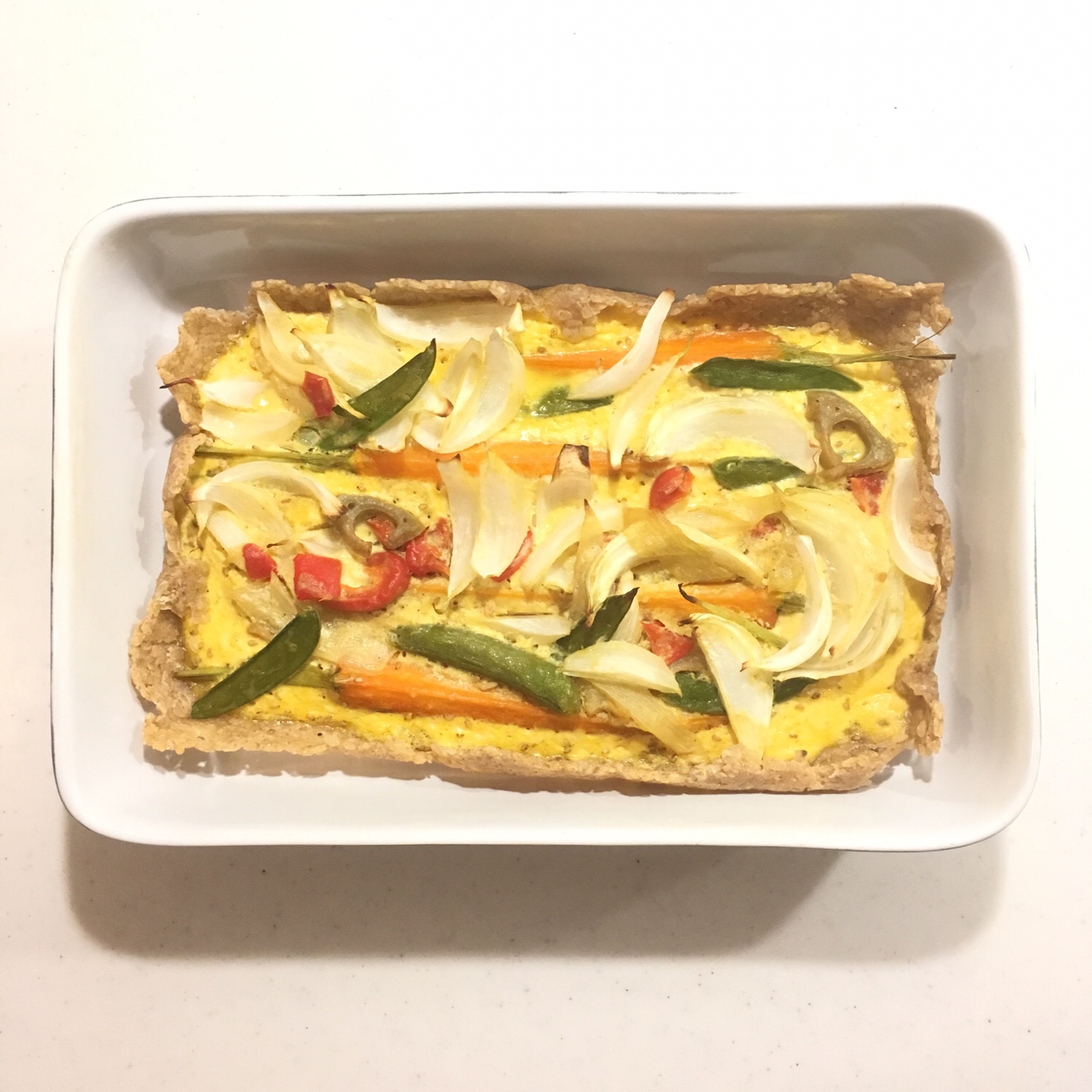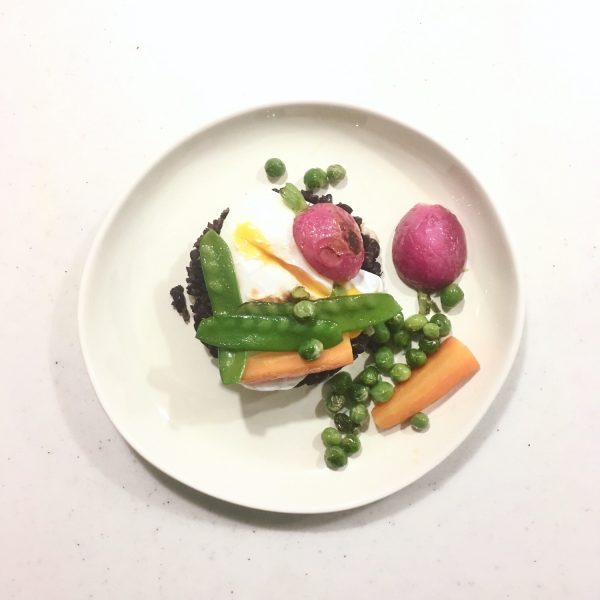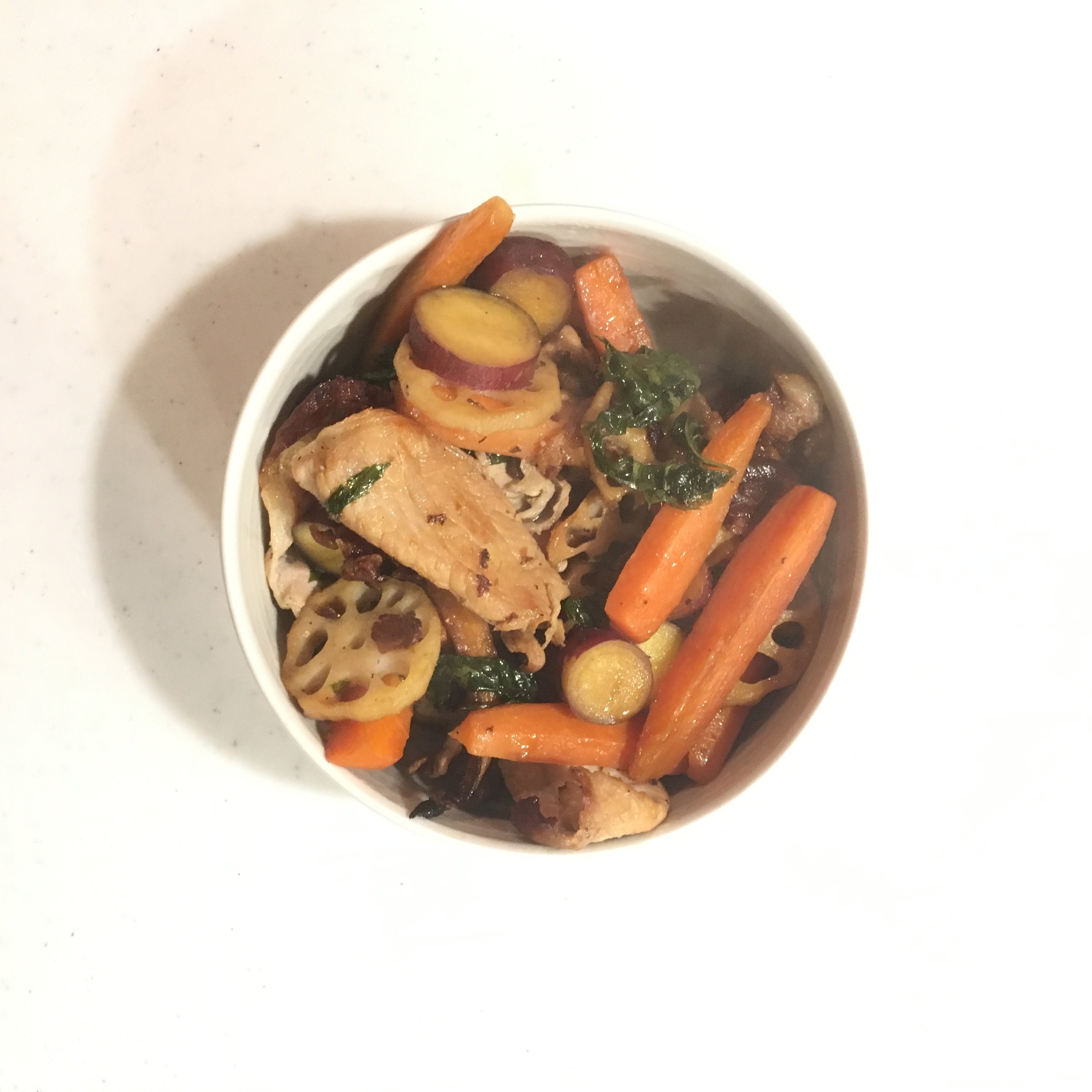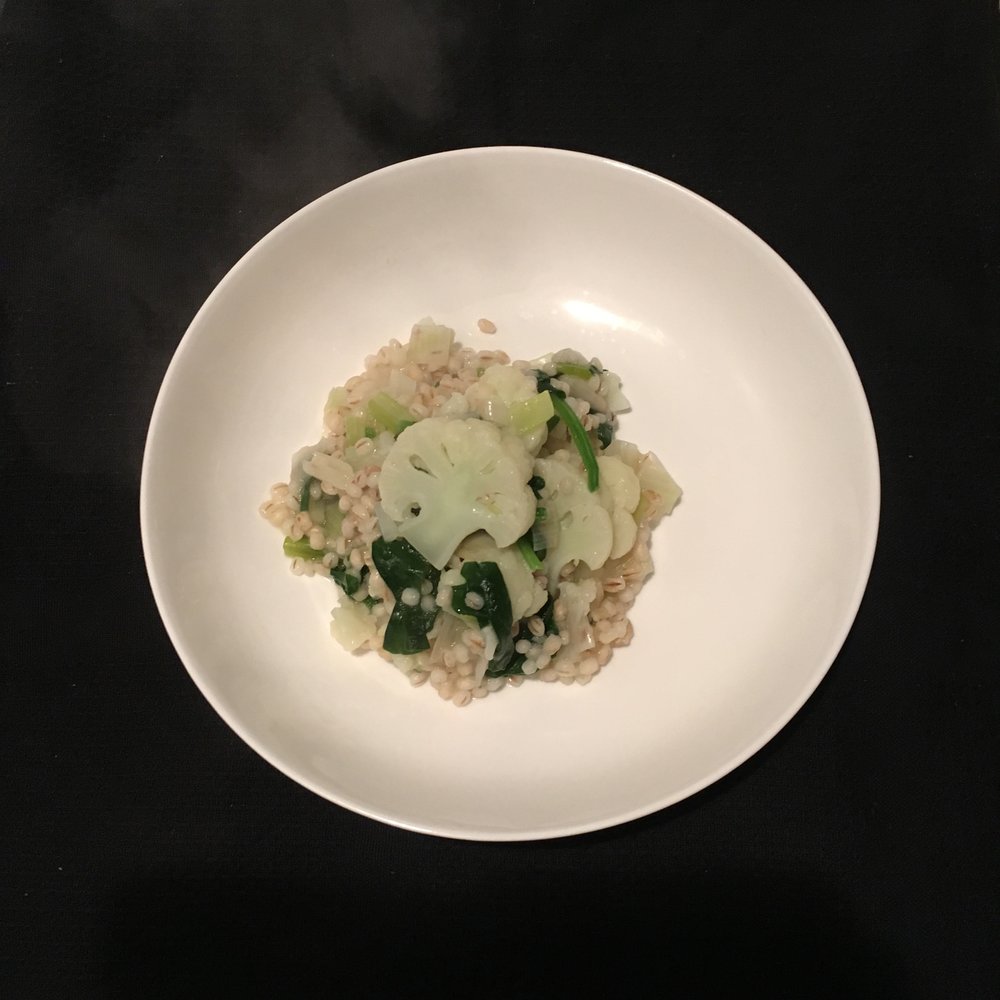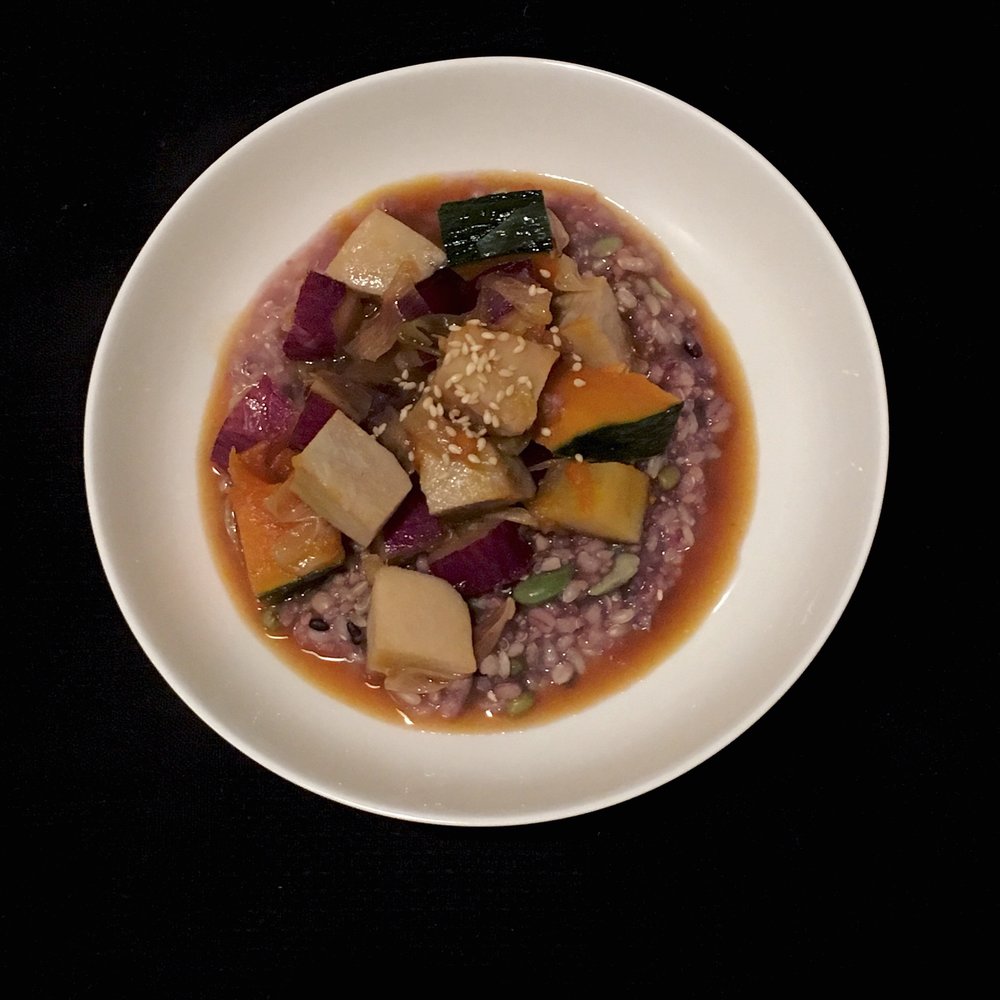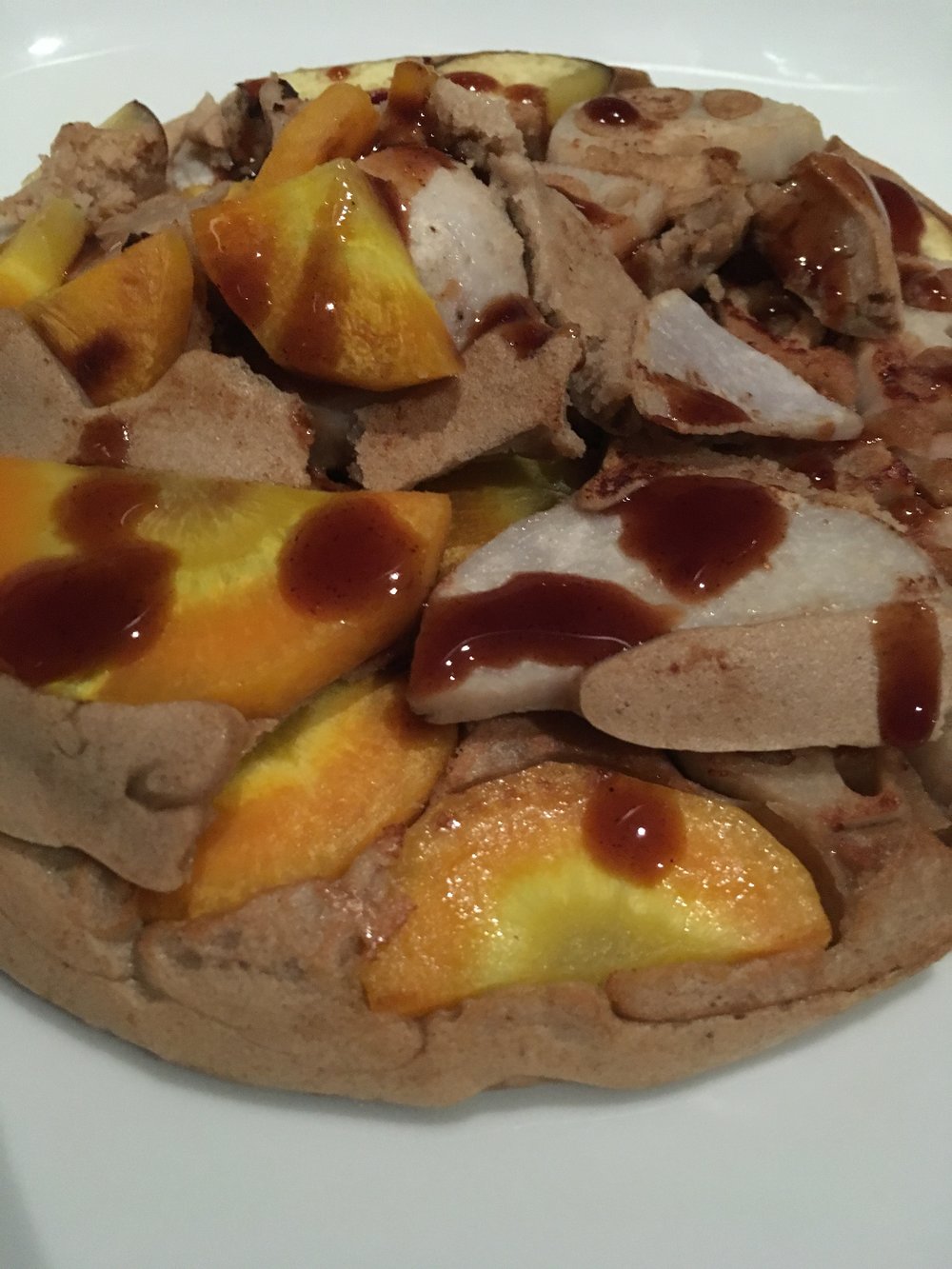I’m a great great fam of greens such as asparagus, green peas, green beans, snap peas eda mame and fava beans. I could eat them all the time! Unfortunately the season for each is rather short but luckily they follow each other and overlap a bit so from March to August there are always some nice greens to eat!!!
Now is the season for fava beans and green peas and I cook them quite often. A classic Japanese preparation of fava beans in Shojin cuisine is with wakame, and I really like the association of the melting soft bean with the more slimy and crunchy seaweed. In the books normal recipe the fava beans and the wakame are simmered with soya sauce and sake. I chose a lighter version in taste and I prepared them as a sauce for soba noodles and added also some green peas. It’s almost a classic for me since I often cook something similar at that season! Here is my recipe:
Fava bean and wakame soba
– a handful of fava beans
– a handful of green peas
– a bit of wakame (I used new wakame)
– soba noodles
– olive oil and salt (or soya sauce)
Shell the peas and the beans. Peel the beans (I realized recently that it is no need to blanch the beans to peel them, raw they are easy to peel too). Boil water in a small pan to blanch them. Add the wakame cut in small pieces and then drain and reserve. In a large pan boil water for the soba. Cook as instructed. Then rinse in fresh water and drain very well. In a bowl put the soba, pour some olive oil, add salt or soya sauce, then the vegetables. Stir gently and serve.
